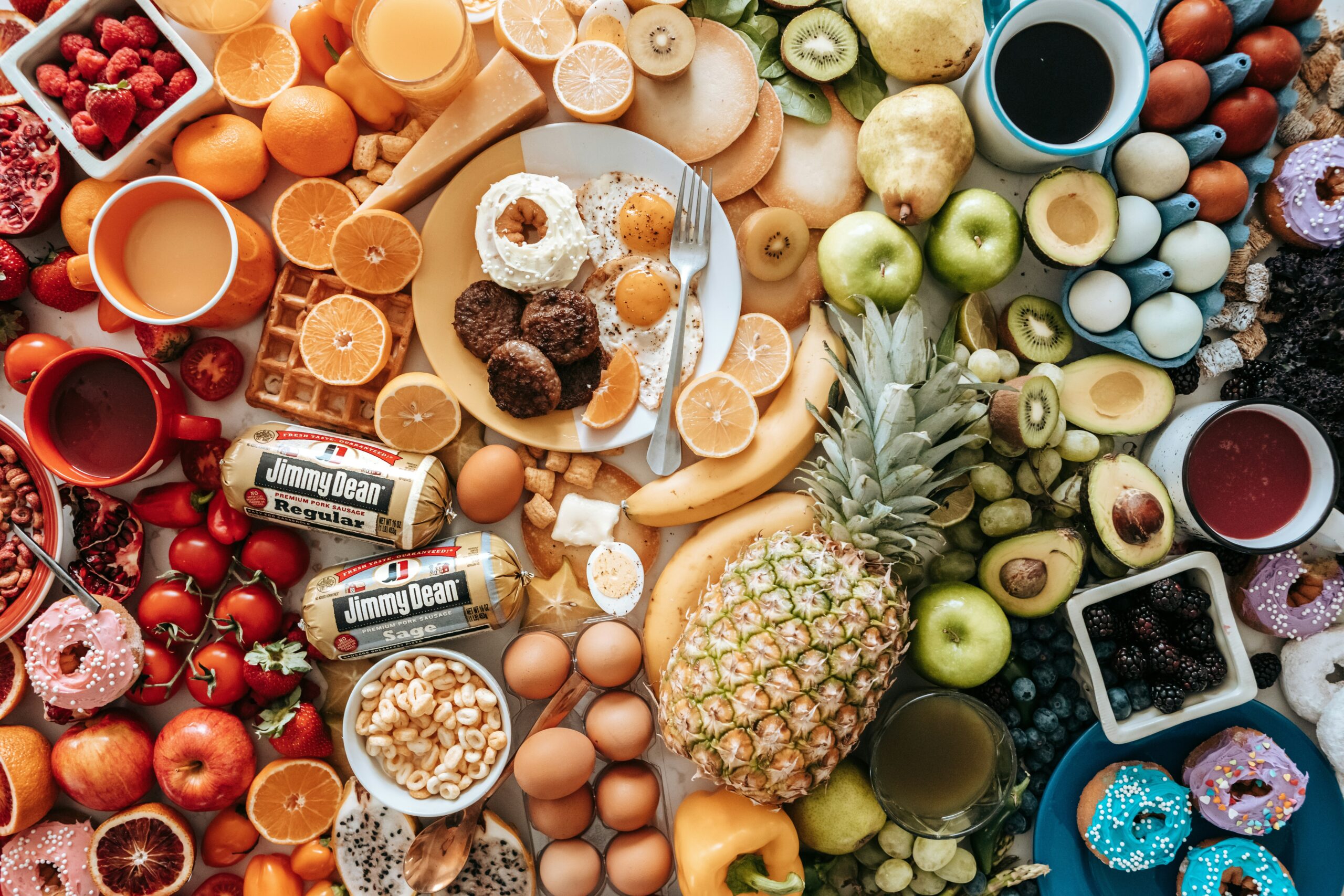As an ‘allergy parent’, you’ll know how hard it is learning to manage your child’s allergies, but if you add into the equation managing everyone else, their expectations and misunderstanding, life can feel like a minefield. It would be tempting to simply always stay with your child.
We all know that’s neither possible nor a sensible solution.
Whether it’s explaining why you’re not just being fussy about what your child eats, or navigating social situations like parties, sleepovers, and school trips, life can feel overwhelming. The key to handling these situations is finding your voice—being clear, confident, and compassionate in communicating the importance of food safety for your child without feeling embarrassed, confrontational, or overbearing.
We’ll discuss how to navigate food allergies as a parent, from explaining the allergy to others to making food swaps, reading food labels, and offering easy recipe ideas. We’ll also touch on how to manage tricky social situations with other parents and offer practical tips for finding your voice when it comes to your child’s allergies.
1. Explaining the Allergy: You’re Not Being Fussy, You’re Being Careful
With food allergies, the first hurdle is explaining the situation to others in a way that helps them understand the severity without feeling defensive. Unfortunately, food allergies are often misunderstood. People might think you’re being overly cautious, or even worse, fussy about what your child eats. However, we know that food allergies are serious and can be life-threatening. So, how do you convey that to others?
Be Calm, Clear, and Concise
When talking to others, use clear, non-technical language. Instead of saying, “My child has a severe allergy to peanuts,” say, “My child has a life-threatening reaction to [their allergen]. If they accidentally eat even a small amount, they could go into anaphylactic shock, which ALWAYS results in an emergency trip to hospital.”
Acknowledge Their Efforts
People may feel a little defensive or guilty when they realise that they might unknowingly expose your child to an allergen. Acknowledge their efforts to be supportive, even as you explain the allergy. For example, you could say, “I know it can be challenging, but I really appreciate your kindness and desire to help.”
Offer Solutions and Alternatives
Instead of asking others to avoid certain foods, offer alternatives that are just as tasty or enjoyable. For example, if your child has a dairy allergy, offer non-dairy versions of common treats. A small substitution might make all the difference and will show that you’re not just being restrictive… you’re looking for solutions.
2. Making Easy Food Swaps: Allergies Don’t Mean Boring Meals
It can feel like food allergies limit your options, but there are so many easy swaps you can make that will ensure your child can still enjoy delicious meals without compromising their safety. Once you become familiar with swapping ingredients, life does become a little simpler.
Common Food Swaps
- Dairy-Free: If your child can’t have dairy, try swapping cow’s milk for almond, oat, or soy milk. For cheese, there are many dairy-free options available.
- Gluten-Free: Gluten-free flours (such as rice flour, almond flour, or gluten-free all-purpose flour) can be used to replace wheat flour in baking recipes.
- Egg-Free: Apple sauce, mashed bananas, or flaxseed meal mixed with water can be used as egg replacements in baking or pancakes.
- Nut-Free: Sunflower seed butter can be a great alternative to peanut butter, while seed-based snacks can replace nut-based treats.
These are just a few examples… you’ll find a whole chapter on all top 14 allergens, plus legumes in my book, Have you ever seen a Bee with Hives?
Meal Prep and Batch Cooking
Try making a few allergy-friendly dishes in bulk and freezing them for later use. That way, you’ll always have something on hand that your child can eat, saving time during busy weeks or last-minute situations.
Involve Your Child
If your child is old enough, involve them in cooking and choosing recipes. This gives them some control and helps them feel less isolated by their allergies. It’s also a great opportunity to teach them about how to manage their own food choices. And if a child’s involved in making their meals, you can guarantee they’ll eat and enjoy the food!
3. Reading and Understanding Food Labels
Food labels can be a parent’s best friend or worst enemy when it comes to managing allergies. In many countries, food labels are required to list common allergens. In the UK, they must appear on the pack in CAPITALS or bold type.
Look for Allergen Information
In the ingredient list, watch for potential allergens. But also check the ‘Contains’ or ‘May Contain’ statement, which will list the top allergens in bold or a separate section of the label. This can help you identify whether a product is safe.
Know Cross-Contamination Risks
Many products might not contain the allergen themselves but could be processed in facilities that handle those allergens. Look for phrases like “may contain traces of [allergen]” or “produced in a facility that processes [allergen].” While these warnings are not always mandatory, they are important for parents of children with severe allergies.
Stay Updated
Manufacturers occasionally change recipes or processing methods, so it’s important to check labels EVERY TIME… even for products you’ve bought before. This will help avoid any surprises.
4. Giving Others Easy Recipe Ideas
When it comes to parties, family events or sleepovers, offering others easy, allergy-friendly recipes can help your child feel included and safe.
Create a Recipe Folder
A simple, handy recipe folder containing a few of your child’s favourite meals can be a real help to others. Collect recipes online or from your favourite books, adapt your own favourites and share, share, share!

5. Navigating Social Situations
Food allergies don’t just affect meals at home. They can make social events like parties or school trips stressful. Follow these tips:
Talking to Other Parents
If your child has an invitation to a sleepover or party, talk to the host parent ahead of time. Explain the allergy and ask if they can work with you. Offer to send safe snacks or meals which will help your child feel included.
School Trips
School trips can be tricky when food is involved. Discuss your child’s allergies with the school staff in advance, and make sure there’s a clear food plan. If necessary, provide your child with a packed lunch.
Avoiding Embarrassment or Confrontation
You shouldn’t feel awkward about asking others to take care with food. Your child’s safety is too important. Start the chat positively, saying that you would like to help them and work with them to make sure everyone is safe and not over-burdened with food prep.
6. Finding Your Voice
Navigating food allergies as a parent is about finding your voice, which allows you to advocate for your child. At the start it can feel like there’s an overwhelming amount to learn. But as time goes on, you and your child will become experts at telling others about the difficulties and dangers, plus explaining simply how they can help you to keep your child safe.
Most people want to include your child and they’ll be grateful when you make it easier for them to do so safely and calmly; it’s confusing for everyone and the best thing you can do is spread your knowledge.
The key is to include your child and their siblings in these chats and decisions. This means they can self-advocate and explain to others. Knowledge is power and with this know-how comes the confidence for your child to empower others to help them.
About Davina Steel
Following a first-class degree in Biochemistry and Applied Microbiology, Davina became a research scientist. Over her career, she was also Managing Editor of a Biotechnology Journal and explained science for children’s magazines and websites. After developing severe gluten intolerance following cancer treatment, Davina developed award-winning gluten-free breads.
Davina’s book, Have you ever seen a Bee with Hives? All you need to know about food allergies and how to deal with them is available now. A confirmed ‘Best Seller’ on Amazon it’s a must-read for ages 8+ who are affected by food allergies, their friends, parents and everyone at school.
You may also like to enter our Parent Coaching competition here
